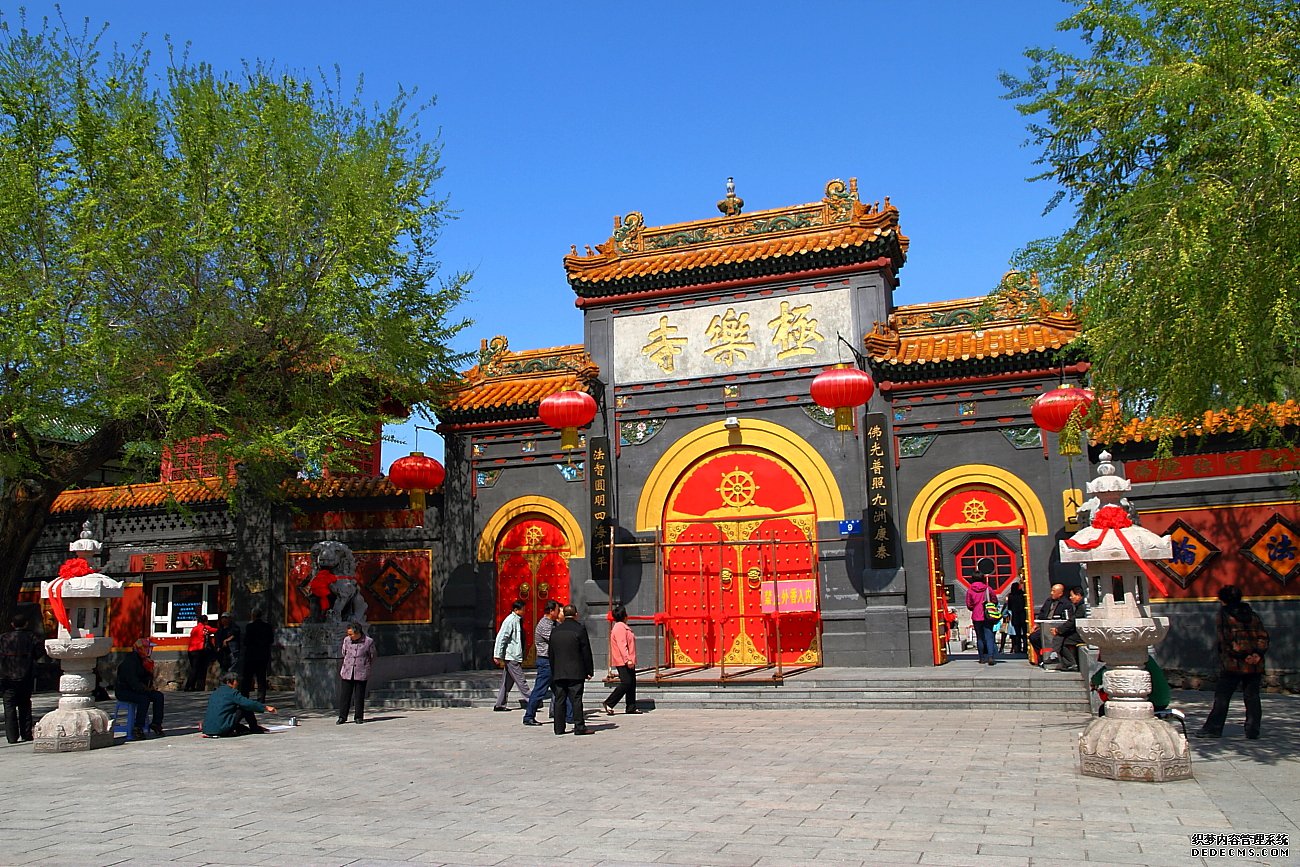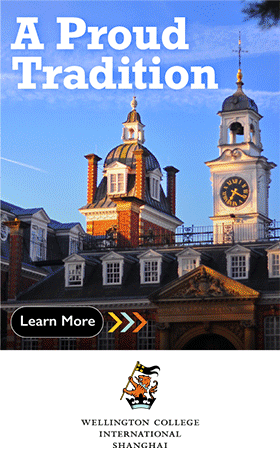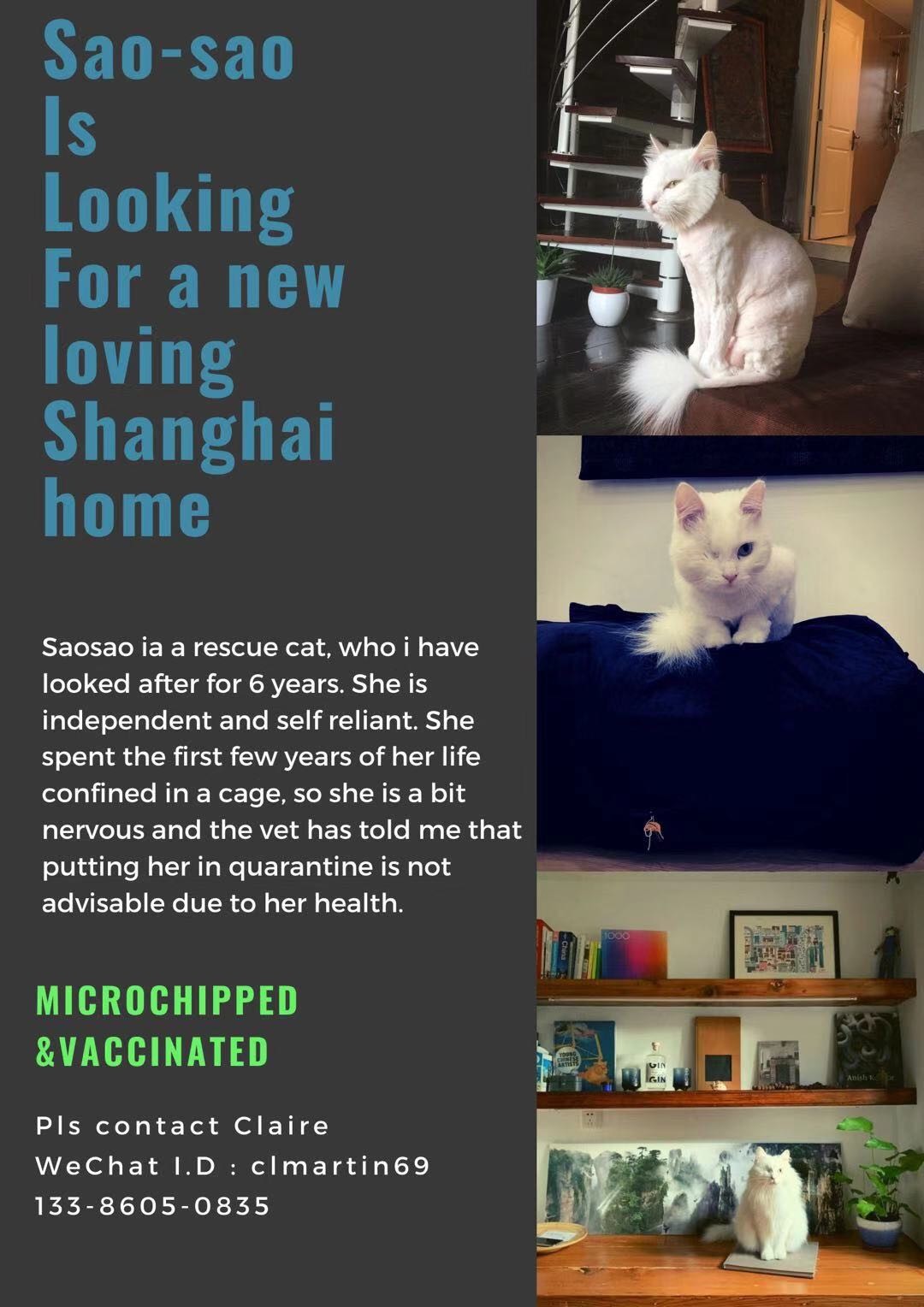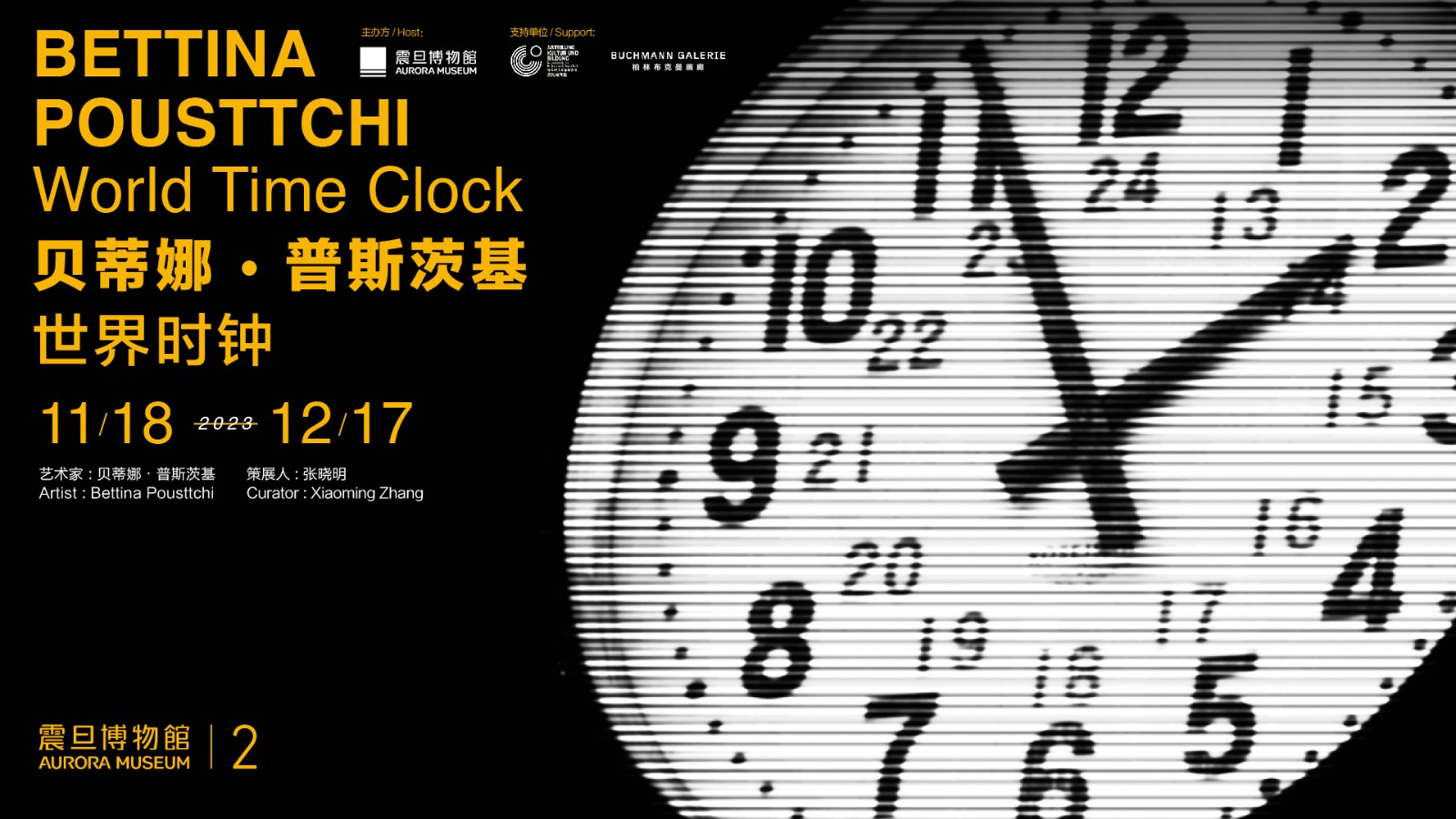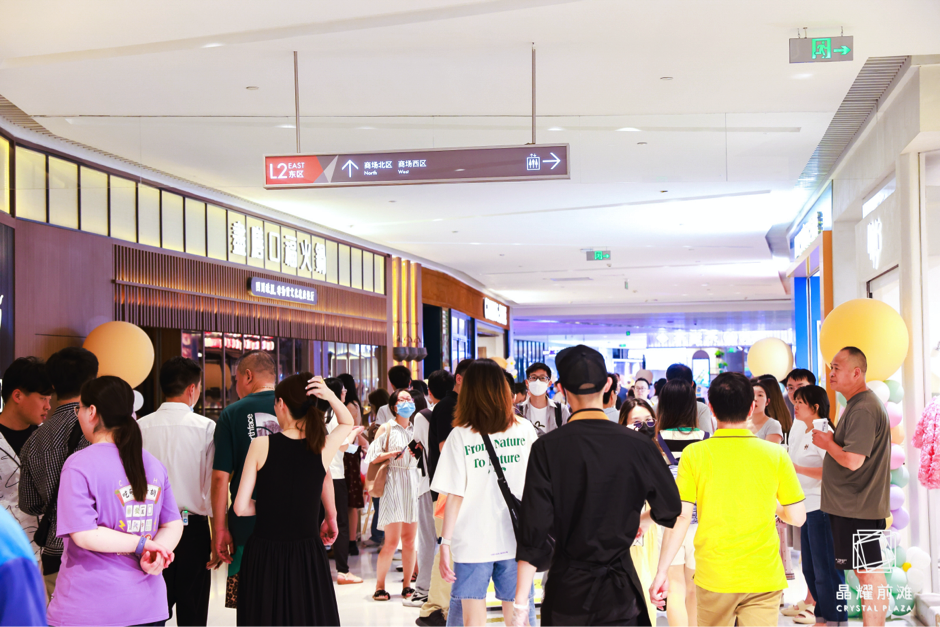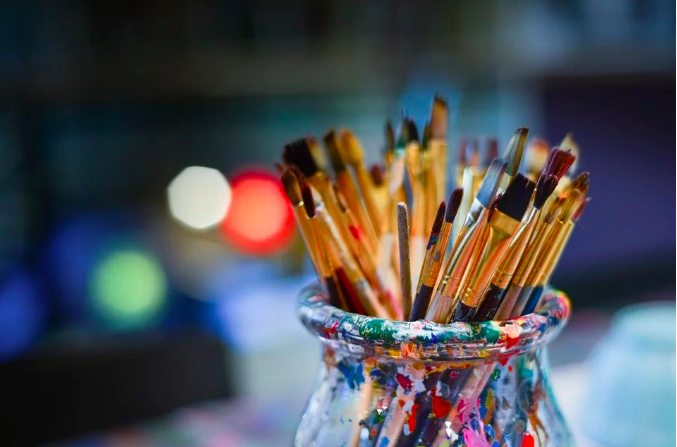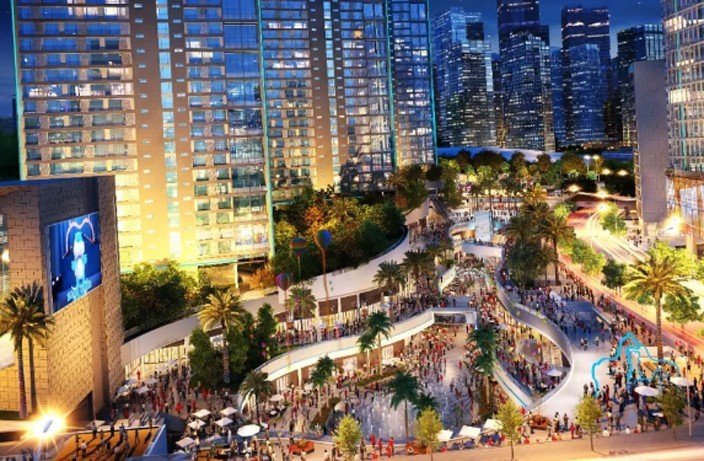Harbin Travel Guide: Attractions, Tips, Food, Weather and More
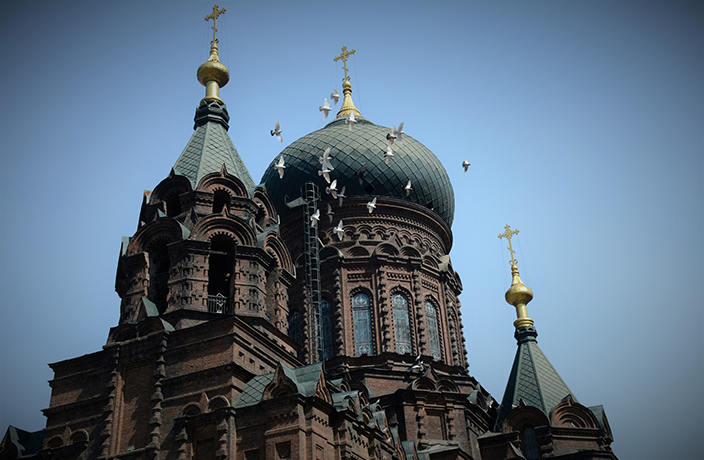
The capital of China’s Heilongjiang province, Harbin (哈尔滨) was founded in 1898 with the construction of the Chinese Eastern Railway. Since then, the city has evolved from a small rural settlement on the Songhua River to one of the largest cities in northeast China.
Nicknamed ‘the pearl on the swan’s neck,’ due to the shape of Heilongjiang resembling a swan, Harbin is blessed with dry and freezing-cold winters, making it an ideal winter destination. This is largely thanks to the city’s annual ice festival; a months-long extravaganza featuring giant lit-up ice sculptures. Now in its 35th edition, the 2019 Harbin International Ice and Snow Sculpture Festival lasts from December 24, 2018 to February 28, 2019.
One of the four largest ice festivals in the world, Harbin’s iteration is a must-see for sheer spectacle alone. But there’s plenty more to the ‘Ice City’ than, well, ice – like locally brewed Harbin beer and neo-Byzantine architecture, or hearty Dongbei food alongside European cuisine. Indeed, the city encompasses a curious mix of cultures, with Russian and Jewish heritage featuring prominently.
These influences are evident from the streets – which wind in typical meandering European fashion – to the table, where local Harbin-style smoked savory red sausage is more akin to a mild German style than Chinese.
Aesthetically, the city boasts formidable historic architecture, ranging from temples, churches (including the famous Russian Orthodox Church of St. Sophia) and synagogues. These mark Harbin’s Daoli District, a popular tourist spot. Meanwhile, those looking for quieter and authentic Chinese culture can visit ‘Old Harbin’ in Daowai District.
Yet there’s something undeniably modern about Harbin. Take a look at the sculptural Harbin Opera House and Grand Theater. Better – or at least higher – yet, hop on Harbin’s Ferris wheel for views of the whole city (just remember to bring your coat and an extra pair of gloves).
For more to see, taste and do in the Ice City, check out our guide below.
Attractions: Recommendations for the Best Things to See and Do in Harbin
Harbin International Ice & Snow Sculpture Festival (哈尔滨国际雪雕节)
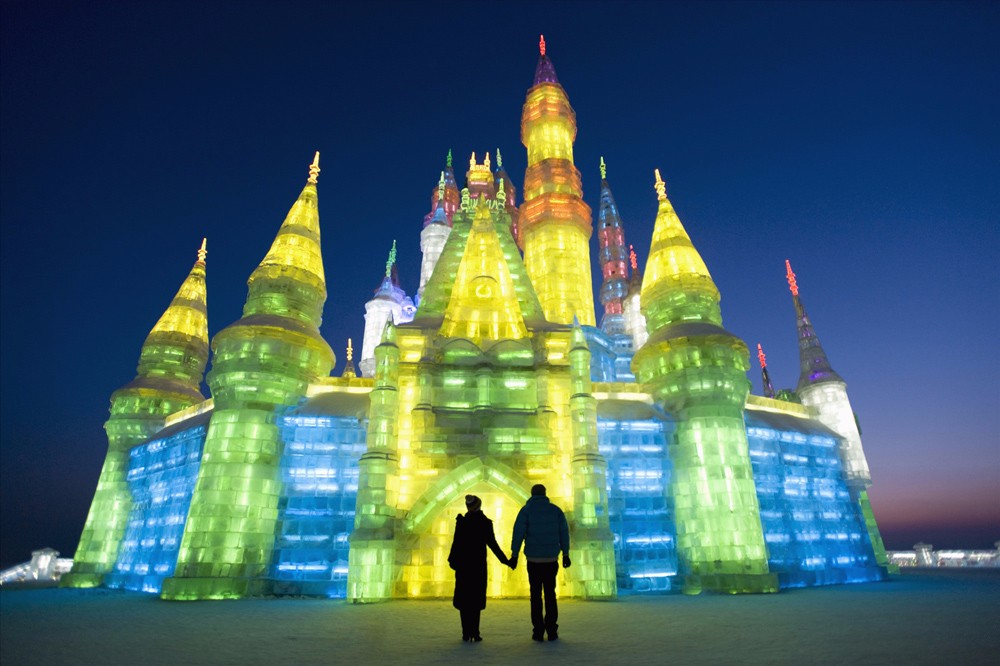
Image via Quanjing
The glittering ice-jewel in Harbin’s metaphorical ice-crown, Harbin’s annual months-long ice and snow sculpture festival is not-to-be-missed. Attracting millions of visitors, both local and international, the festival comprises astounding ice sculpture exhibits that are jaw-dropping in both size and artistry.
Taking place across multiple venues, the festival has a different theme every year and is the largest of its kind in the world, boasting the world’s biggest ice sculptures. Marvel at life-sized buildings and dreamy castles and enjoy the snow-sports on offer, like sledding and ice-skating. Be sure to visit at night - when you can view the structures lit up in multi-color by thousands of colorful LED lights fitted inside each sculpture.
Established in 1985, the festival's exhibits are crafted by ice sculpture experts from all around the world. As such, the festival is not only an attractive wonderment but also an opportunity for cultural exchange.
The three major venues are Sun Island, Ice and Snow World and Zhaolin Park.
Sun Island houses the Snow Sculpture Exposition and the world's largest indoor ice and snow art museum.
Ice and Snow World was built in 1999 and is a massive ice architecture park. Its design was inspired by world-famous architecture such as the pyramids of Egypt, as well as traditional Chinese tales.
Last but not least, Zhaolin Park is a must-visit for its beautiful ice lanterns, which are made by carving and decorating piled up snow. A multitude of objects are carved from the ice, like European-style churches, gardens, fantastical creatures and waterfalls.
The festival typically takes place from the end of December to the end of February. Accordingly, the weather is cold – scratch that, freezing – at temperatures ranging between -25 and -10 degrees Celcius – so it pays to bundle up. Thermals, a warm coat and wind jacket, thick boots, gloves, scarves, earflaps and a wooly hat are all par for the course.
Altogether, the ice festival ensures that Harbin is enveloped in a magical cloak of joy during the coldest months of the year. It's a spectacle that must be seen up close to fully appreciate its magnificence.
Tips
If the festival falls within the Chinese New Year period, it's likely the parks will be extremely crowded and accomodation hard to come by — and expensive. Tickets must be purchased for each venue of the festival, with different prices for different tickets (free up to RMB330). Tickets for all three can either be purchased directly at the attraction or online; discounts and group packages are also available. Zhaolin Park has waived the ticket fee for 2019.
How to Get There
The festival is spread across different venues, with each easily accessible via bus or taxi. During the festival, special buses run across the city, shepherding tourists to each venue. To save time getting around and for more privacy, try hiring a private driver.
* Ticket prices listed below for the Ice & Snow Sculpture Festival are as of January 2019.
Sun Island International Snow Sculpture Art Fair (太阳岛国际雪雕艺术博览会)
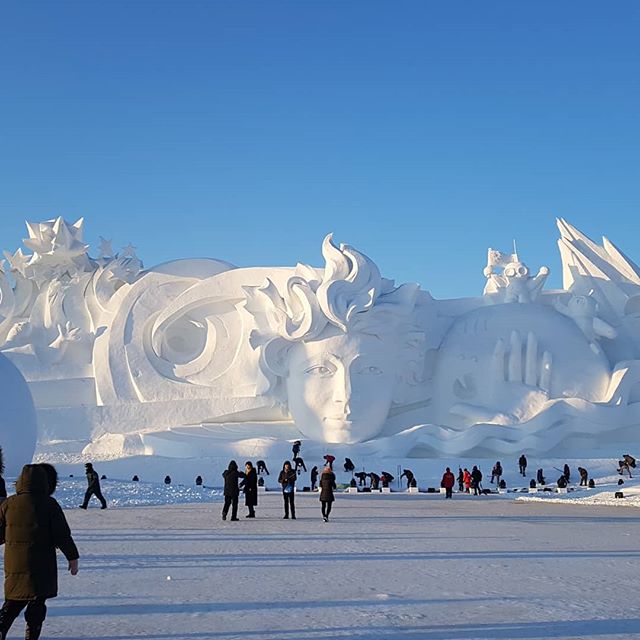
Image via @tsarenko5477/Instagram
Available for viewing during the day, the Snow Sculpture Art Fair allows you to see massive, larger-than-life sculptures carved out of snow.
Hours: Daily during the festival, 8am-5pm
Admission: RMB330, RMB280 pre-sale online.* Visit the official Snow Sculpture Fair website at xuebohui.com.cn (in Chinese only) for more details
3 Jingbei Lu, within the Sun Island Scenic Area, Songbei District 松北区警备路3号太阳岛风景区内 (451) 8819 2966
Ice and Snow World (冰雪大世界)
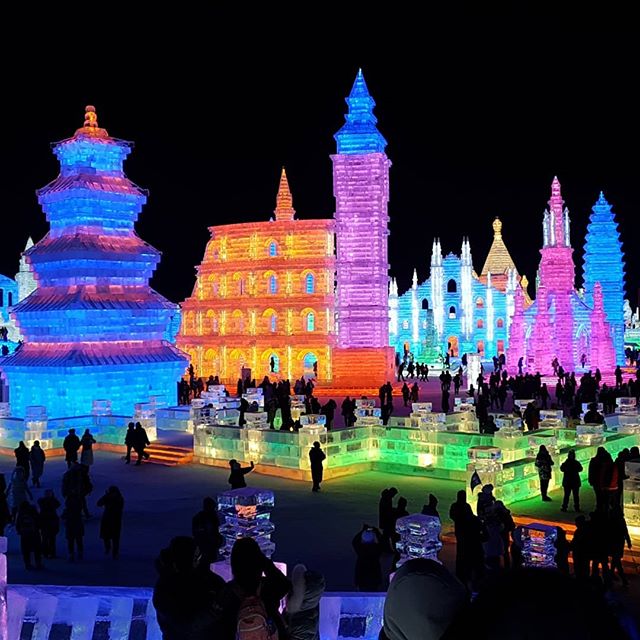
Image via @tsarenko5477/Instagram
Visit Ice and Snow World at night to view the structures lit up in multicolor by thousands of colorful LED lights fitted inside each sculpture. This well-visited part of the festival also typically features slides made of ice. Cafes are spotted around the grounds in case you need a break to heat up when it gets too chilly outside.
Hours: Daily during the festival, 11am-10pm, lights turned on after 4.30pm
Admission: RMB330; RMB310 pre-sale online*; RMB200 for students, seniors and children (ticket sales end at 9.30pm). Visit the official Ice & Snow World website at hrbicesnow.com (in Chinese only) for more details.
West Section of the Sun Island Scenic Area, Songbei District 松北区太阳岛西侧哈尔滨冰雪大世界景区 (451) 130 9188 8520
Ice Festival, Zhaolin Park (冰雪游园会, 兆麟公园冰灯)
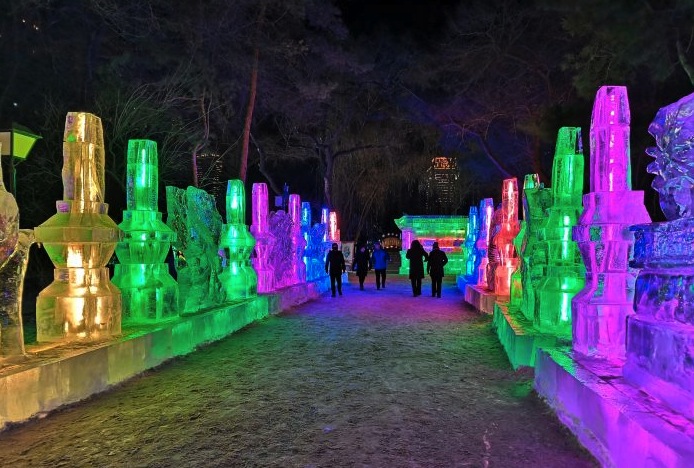
Image via Dianping
In the city center, there's also a lower key festival at Zhaolin Park, featuring smaller sculptures and ice lanterns. Also best viewed at night.
Hours: Daily during the festival, 8am-8pm
Admission: Free
74 Youyi Lu, Daoli District 道里区友谊路74号, (451) 8469 2804
Saint Sophia Cathedral (哈尔滨圣索菲亚教堂)
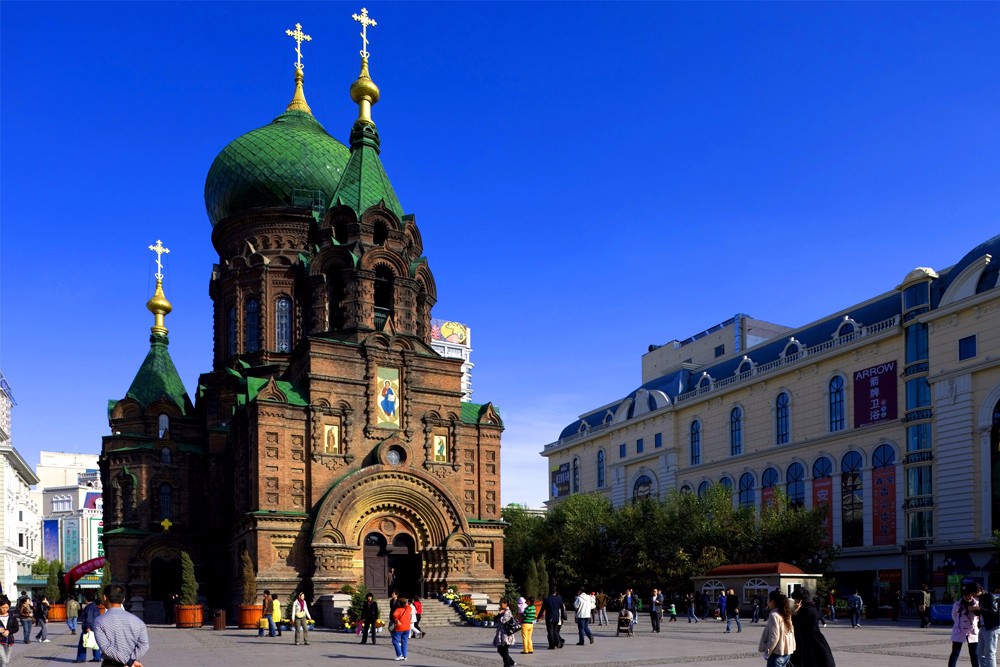
Image via Quanjing
Located in central Harbin, Saint Sophia Cathedral is a former Russian Orthodox Church and prime example of Neo-Byzantine architecture in China. Founded in 1907, the cross-shaped cathedral stands at 53.3 meters tall and over 721 square meters. A striking green dome tops the main center hall, while four different tent roofs surround the center dome.
After periods of expansion, closure and restoration, the church now serves as an art gallery, showcasing the city’s architectural developments. A large musical fountain sits in front of the church, providing a pretty scene for photo opportunities. The church – hailed the largest Orthodox Church in the Far East – looks especially majestic at night under bright lights and a dark sky.
Hours: Daily, 8.30am-5pm
Admission: RMB20 (ticket sales end at 4.30pm)
88 Toulong Jie, Daoli District 道里区透笼街88号
Unit 731 Museum (731部队罪证遗址)

Image via 731 Museum
Unit 731 was built in the 1930s as a biological warfare research center of the Imperial Japanese Army. It was the site of horrific war crimes, including lethal human experimentation, carried out by Japan during the Second Sino-Japanese War. Originally part of a 150-building complex covering 6 square kilometers, the building today serves as a museum with photographs and relics from the period donated by locals as a reminder of the atrocities committed in China during the war. Although a sobering site, the museum is informative and detailed – a must-visit for war or history buffs (though not recommended for children). Guided tours are available, including an audio guide in English.
Hours: Tues-Sun 9am-4pm (last entry at 3pm)
Admission: Free
47 Xinjiang Dajie, Pingfang District 侵华日军地731部队遗址, 平房区新疆大街47号, (451) 8710 8731 www.731museum.org.cn
Zhongyang Dajie Pedestrian Street (中央大街)

Image via @wang.dongxin/Instagram
A picturesque avenue located in the old central district of Harbin, Zhongyang Pedestrian Street was built in 1898 and measures 1.4 kilometers long. Surrounded by Baroque and Russian architecture, the pedestrian-only area has a distinct European feel. The store-lined cobblestone streets are a shopper's dream with stores including both international and local brands. Most businesses close by 10pm. Make sure to stop by the Madieer Ice Cream Shop (马迭尔冰棒 Ma Die Er Bing Bang), which is a hit among visitors even in the frigid winter months!
Zhongyang Dajie (between Jingwei Jie and Stalin Park at the Songhua River), Daoli District 中央大街
Siberian Tiger Park (东北虎林园)
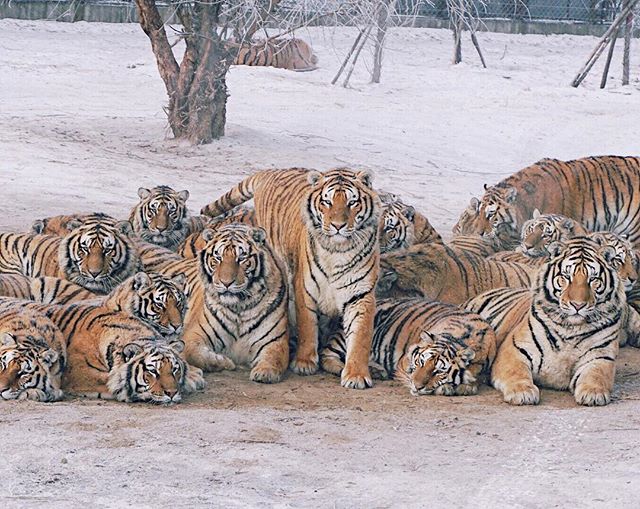
Image via @seewleng/Instagram
Popular among tourists, this preserve is the world's largest natural park for wild Siberian tigers, with over 500 purebred Siberian tigers, and at least 100 viewable for visitors. The park also houses white tigers, lions, lynx, leopards, black pumas and Bengali tigers. Tourists are able to ride in a caged bus to watch the tigers roam around in the open-air zone. Visitors can also buy poultry and other meats — as well as live animals — to feed the tigers.
Hours: Daily, 8.30am-4pm
Admission: RMB110-130
88 Songbei Lu, Songbei District 松北区松北街88号 (松北开发区松花江北岸, 近太阳岛), (451) 8808 0098 (451) 8808 0680
Songhua River (松花江)
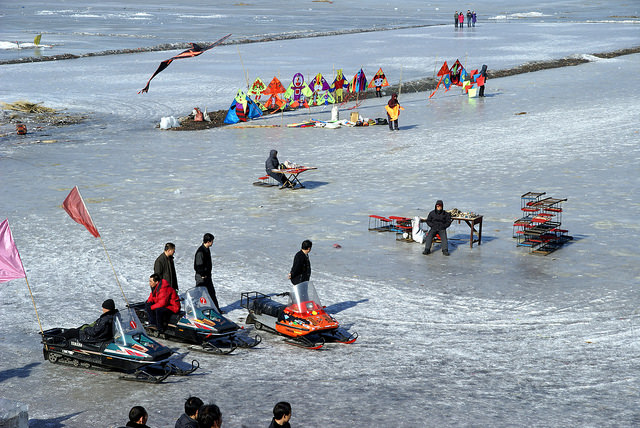
Image via Flickr
If you're visiting Harbin for the Ice Festival, plenty of daytime activities such as ice skating will be taking place on the Songhua River, which completely freezes over during the winter (November-April). You can get to the riverside by walking from Central Street. There is also a cableway crossing the river that connects Tongjiang Square in Daoli District with Sun Island Park.
Cableway Hours: Mon-Thu 8.30am-5.45pm, Fri-Sun 8.30am-6.45pm
Admission: RMB50 one-way, RMB80 roundtrip
Songhua River Cableway (松花江观光索道), 218 Tongjiang Jie, Daoli District 道里区通江街218号, (0451) 8468 8841
Jile Temple (极乐寺)
Image via Jile Temple
Heilongjiang's biggest Buddhist building complex literally means 'The Temple of Bliss.' Built between 1921 and 1924, the temple covers 27,570 square meters, with plenty of space to wander around. Sites include large statues, such as Shakyamuni Buddha, and the Seven-Tiered Buddhist Pagoda, dating from 1924. Jile's status as an active temple lends the space an authentic feel, while the overall peacefull atmosphere feels worlds away from Harbin's urban center.
Hours: Daily, 8am-3pm
Admission: RMB10
9 Dongdazhijie, Nangang District 南岗区东大直街9号, (0451) 8253 4762
Restaurants and Things to Eat in Harbin
Things to Eat
Da Lie Ba (大列巴)

Image via @winter_er/Instagram
Also known as the 'big bread,' da lie ba is a round sourdough loaf weighing 2.5 kilograms. The bread’s origins can be traced back to Harbin’s historical ties with Russia, when it was a stop on the trans-Siberian railway and a former Russian trading post, as well as haven for Russian immigrants during the Russian revolution. The da lie ba is savory in flavor, rather than sweet like most Chinese breads, with a crispy outer crust and soft inside.
Di San Xian (地三鲜)
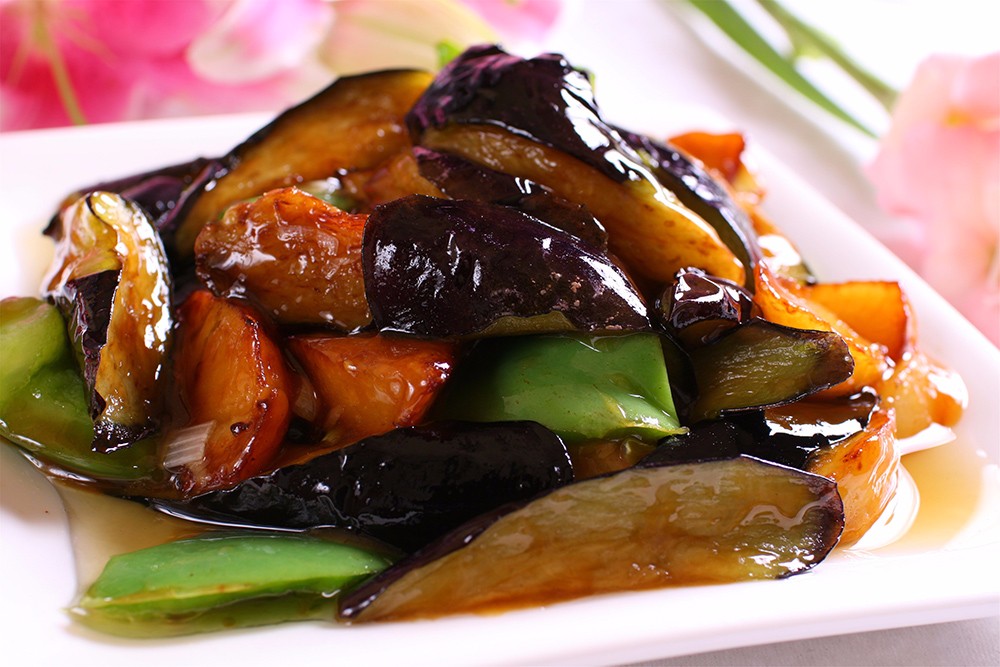
Image via Quanjing
A mix of potatoes, peppers and eggplant, di san xian is one of Harbin’s most famous dishes. And with good reason: The combination of three common vegetables fried in oil and flavored with soy sauce and salt is simply irresistible (di san xian translates to “Three delicacies on earth”). Plus, as well as its great taste, the dish is vegetarian-friendly.
Smoked Red Sausage (红肠)
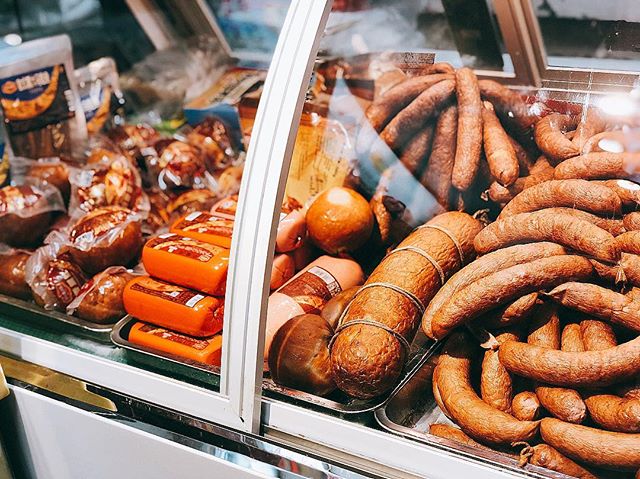
Image via @ty_gee/Instagram
Harbin’s smoked savory red sausage has a milder and more eastern European flavor than its Chinese counterparts. The sausage was first made in 1909 by Lithuanian staff in a Russian-capitalized factory named Churin Sausage Factory, in Harbin’s Daoli District. Usually made from ground meat with salt and spices, the fragrant sausage can be eaten directly without cooking – on its own or with bread and vegetables.
Harbin Restaurants
Laochujia (老厨家)
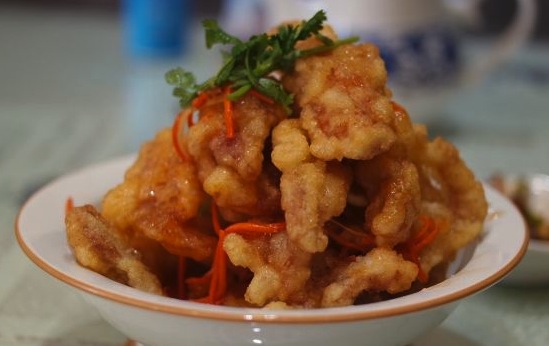
Image via Dianping
This third-generation owned restaurant is a favorite of Harbin locals and visitors alike. Its specialty dish, guobaorou (锅包肉, deep fried pork cullet with sweet and sour sauce), is a popular Dongbei meal that was invented by an ancestor of the restaurant. The family's recipe is still served today. The menu features pictures alongside each meal and visitors can order from a tablet — a great hack for non-Chinese readers and speakers. Another authentic Dongbei cuisine offering includes lapi (拉皮, green beans or potato noodles mixed with savory dressing).
Multiple locations
Portman Western Style Restaurant (波特曼西餐厅)
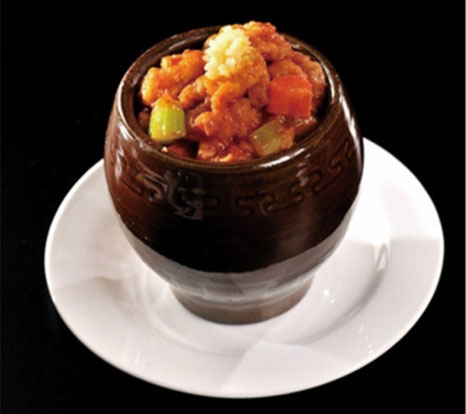
Image via Dianping
Russian influences permeate Harbin culture. Nowhere is this more obvious than in the city's food. Enter Portman. One of the oldest — and most loved — Russian restaurants in Harbin, Portman's offerings have expanded to include fusion dishes. However, the Guanniu/Guanxia/Guanyang (罐牛/罐虾/罐羊, beef/shrimp/lamb) and borscht (红菜汤 in Chinese) are both outstanding choices for a taste of Russia.
12 Xidazhi Jie, Nangang District 南岗区西大直街12号
Dongfang Dumpling King (东方饺子王)
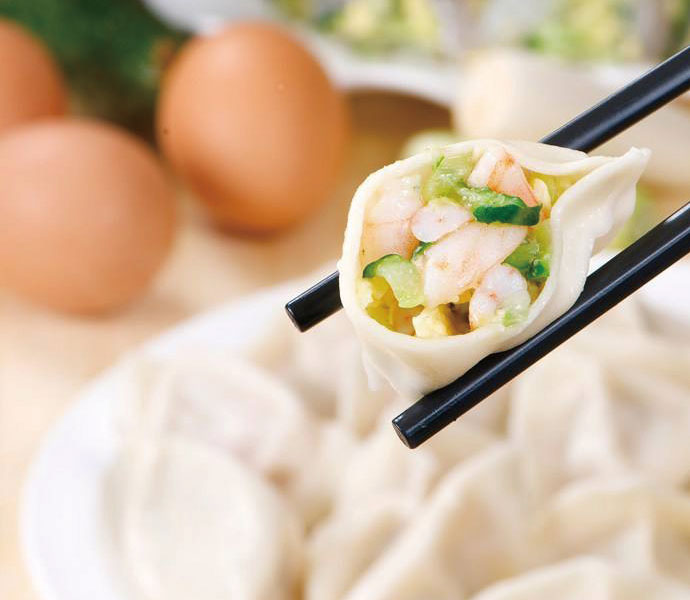
Image via Dianping
Dumplings are a classic Dongbei food and Dongfang Dumpling King is the most prolific — and arguable tastiest — dumpling joint in Harbin. Dumplings are made to order, with flavors ranging from classic (sanxian, 三鲜水饺, pork, sea cucumber and scallops) to the more adventurous (songhua jitui, 松花鸡腿, chicken leg wrapped in thousand year egg).
Multiple locations
Hotels: Where to Stay in Harbin
JW Marriott Hotel Harbin River North (哈尔滨JW万豪酒店)
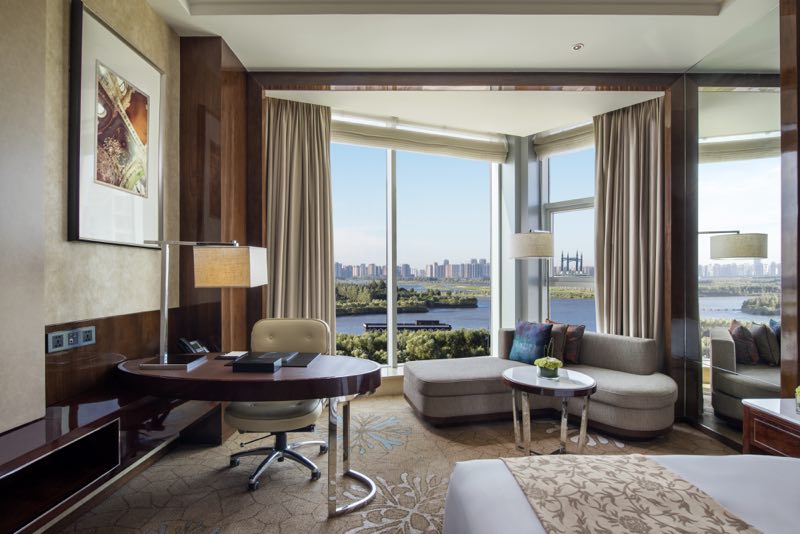 Image via JW Marriott Hotel Harbin River North
Image via JW Marriott Hotel Harbin River North
JW Marriott Hotel Harbin River North lies in front of the famous Harbin Ice & Snow World and is blessed with stunning views of the festival’s ice palaces as well as panoramic river views. The hotel is also within close proximity to Harbin’s best tourist attractions such as the Siberian Tiger Park and Harbin Grand Theatre. Guest rooms are spacious and well designed, offering visitors a very comfortable stay in China’s northern region. When you’re not exploring the city, treat yourself at the full-service spa, or break a sweat at the hotel’s 24-hour fitness center. The hotel also features over 32,000 square meters of outdoor lawn space, the ideal location for weddings or other outdoor events. Indulge at one of the restaurants, bars, cafes and lounges, which offer authentic European and Chinese cuisine, as well as German beer.
199 Chuangxin Yi Lu, Songbei District 松北区创新一路199号 (86 451 5877 7777, https://www.marriott.com/hotels/travel/hrbjw-jw-marriott-hotel-harbin-river-north/)
Wanda Realm Harbin Hotel (哈尔滨万达嘉华酒店)
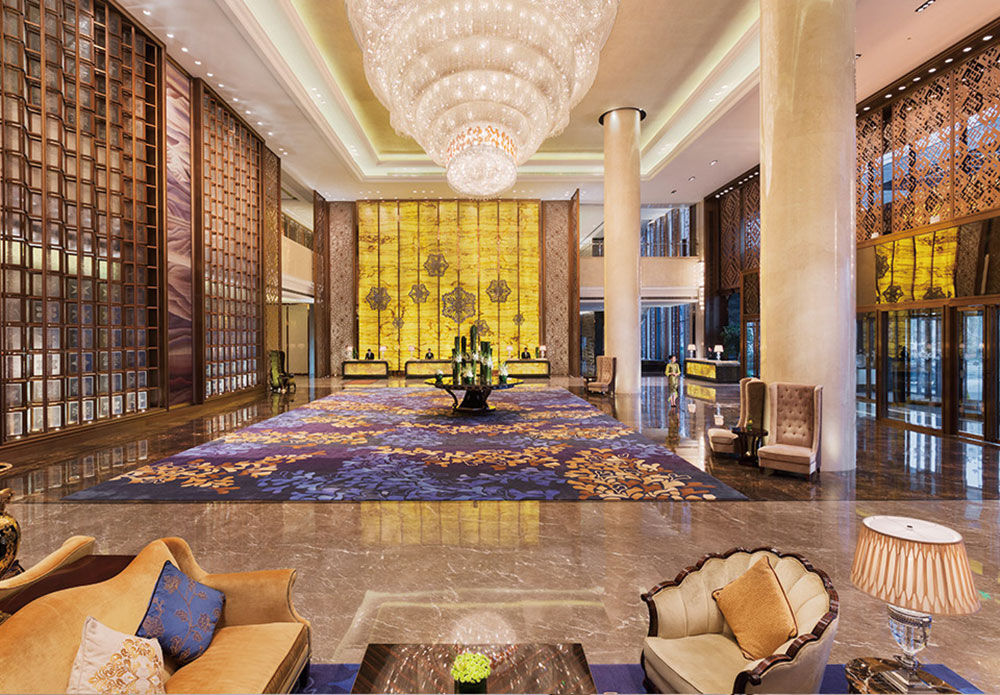
Image via Wanda Realm Harbin Hotel
If you’re looking for a sumptuous and decadent stay in the Ice City, look no further than Wanda Realm Harbin Hotel. Decked out with warm furnishings and glamorous detailing, Wanda offers a delightful old-world charm. Facilities include hairdressers, car rental, and well-fitted gym and spa facilities. The hotel is located a short 20-minute drive from the city center and only a few minutes drive from Harbin West Railway Station. Wanda Realm is a great-value choice complete with all the trappings.
158 Zhongxing Street, Nangang District 南岗区中兴大道158号 (0451 8787 8888, http://en.wanda-harbin.com/)
Shangri-La Hotel, Harbin (哈尔滨香格里拉大酒店)
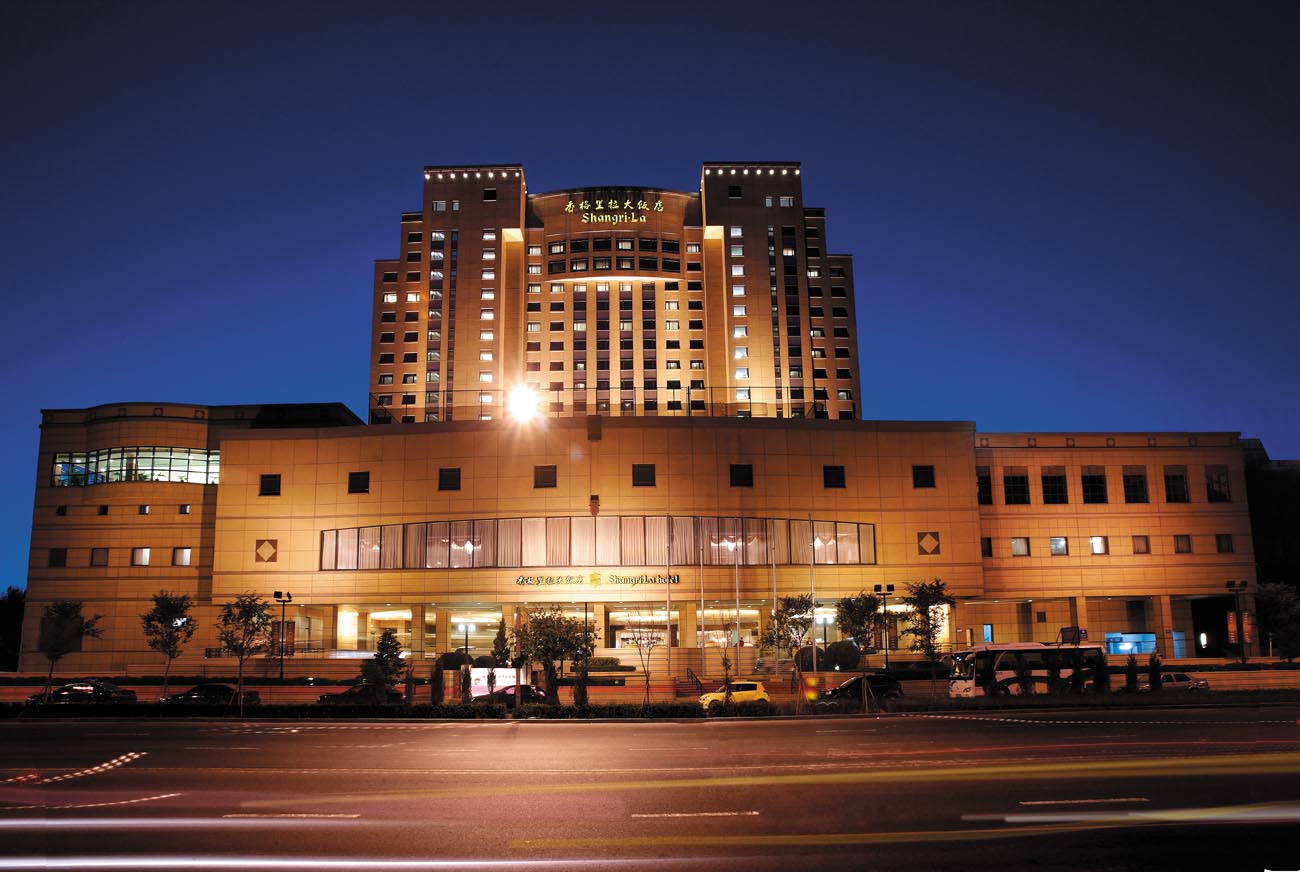
Image via Shangri-La Hotel, Harbin
Located beside the glistening Songhua River, the Shangri-La Hotel, Harbin is a scenic choice for travelers. The hotel's timeless and well-appointed rooms afford both city and river views. Diners can sample tasty fare at two restaurants, with one offering a casual international buffet, and the other refined Cantonese and Heilongjiang cuisine. Situated next to the Shangri-La is Stalin Park. Full of sculptures, flowerbeds and green lawns, the park is a beautiful area to enjoy a leisurely walk or a fast-paced run. Furthermore, the hotel is just a 15-minute drive away from sights like Sun Island and Central Street.
555 Youyi Lu, Daoli District 道里区友谊路555号 (86 451 8485 8888, http://www.shangri-la.com/harbin/shangrila/)
Holiday Inn City Centre (哈尔滨万达假日酒店)
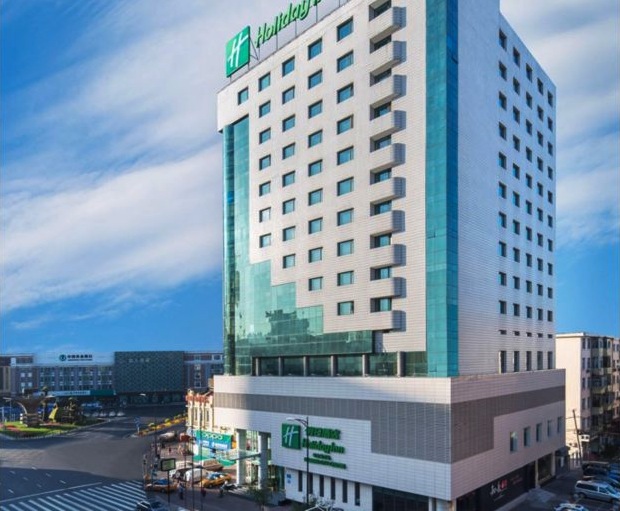
Image via Holiday Inn
A popular choice due to its superior city center location – a mere five minutes walk from the famous Saint Sophia Cathedral – the Holiday Inn offers reliable and convenient accommodation. The hotel boasts plenty of features to suit the busy traveler or family: Businesspersons are catered for with four meeting rooms and an on-site business center, while food lovers will, well, love the Holiday Inn’s dining options – a French-Asian fusion restaurant and a Cantonese- style restaurant. Rooms include both standard and suite options.
90 Jingwei Jie, Daoli 道里区经纬街90号 (86 451 8422 6666, www.ihg.com/holidayinn/hotels/us/en/harbin/hrbch/hoteldetail)
Harbin Weather
Harbin winters are the coldest in the country, so bundling up is a must. Temperatures sometimes dip to as as low as −38°C (−36°F), while daytime temperatures average around −12°C (10°F) between December and February.
Make sure you prepare properly for your trip to Harbin by bringing a windproof coat, waterproof boots, gloves and a hat with earflaps for when you venture outside, as well as wearing multiple layers underneath (long underwear recommended). Dark colors absorb heat to keep you warmer. Lip balm and hand cream are also essential. Heating pads (保暖热贴, baonuan retie, literally 'thermal heat stickers'), warm hats and ice-friendly fur-padded boots can be easily purchased around the city if needed.
Summers are much more pleasant, with temperatures peaking at around 23°C (73°F) in July.
Here's an average annual temperature chart for Harbin.
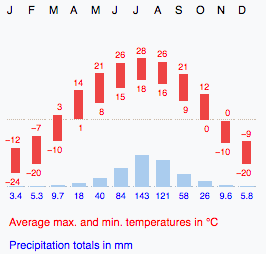
Chart via Wikipedia
How to Travel to Harbin
Flying
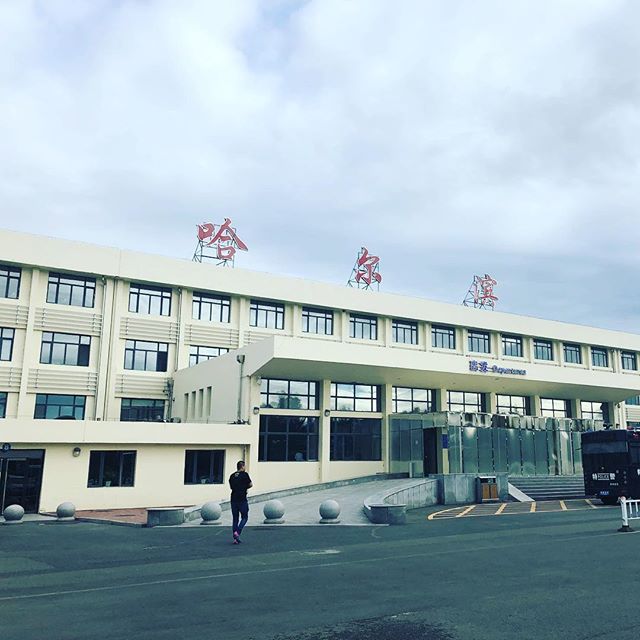
Image via @suzuyoshi9/Instagram
Located around 45 minutes away from the city center, Harbin Taiping International Airport (HRB, 哈尔滨太平国际机场) has daily domestic flights departing to and arriving from dozens of cities within China. International flights are also available to and from places like Vladivostok, Osaka, Seoul and Los Angeles. There are two terminals.
Most hotels offer valet service to and from the airport, however if you decide to take a cab the fare will cost around RMB100-130. Beware of fake cab scams (more on that below).
There are also several shuttle buses operating between the airport and city center for just RMB20 per ticket. Four different routes taking approximately an hour are available, with buses departing from 6am all the way up until 8pm. Schedules vary. Rides can be purchased from the ticket office at the airport.
Train
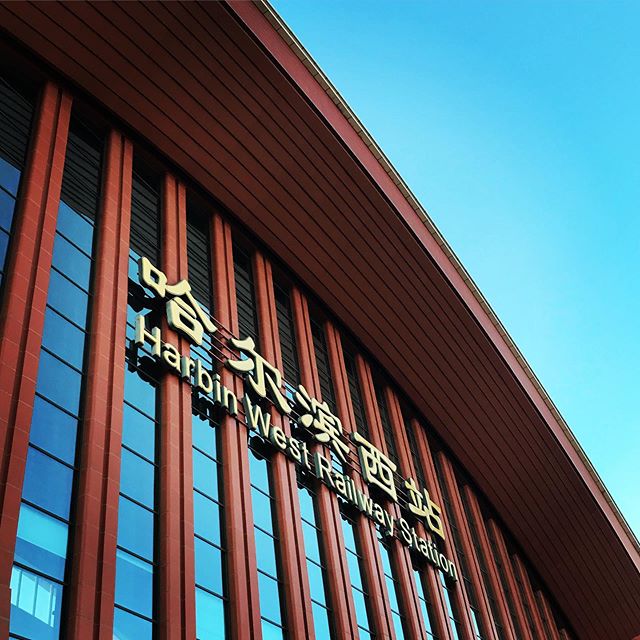
Image via @s.h.kwon/Instagram
The city has two main operational train stations: Harbin West Railway Station (哈尔滨西站), Harbin Railway Station (哈尔滨站). Both service high-speed (G) trains and normal (Z,T and K) trains to and from Harbin.
Harbin West is the terminus of Beijing-Harbin and Harbin-Dalian high-speed railways. Destinations for Harbin West Railway Station on the high-speed train include Shanghai Hongqiao, Beijing, Dalian North, Shenyang, Qingdao North and Tianjin. Normal-speed train destinations are Beijing, Shanghai, Shenyang, Changchun, Tianjin, Qiqihar, Manzhouli and Hailaer.
Harbin Station (otherwise known as "City Railway Station") is located in central Harbin's Nangang District. Destinations for Harbin Railway Station on the high-speed train include Beijing, Changchun West, Shenyang and Qiqihar. Normal-speed destinations are Beijing, Changchun, Shenyang, Tianjin and Qiqihar.
A third station, Harbin East Railway Station (哈尔滨东站), is located in located in Daowai District. Otherwise known as "San Ke Shu Zhan" (Three Trees Station), Harbin East operates normal-speed trains to Chifeng, Dandong, Binjiang, Jiamusi and Heihe.
Long Distance Bus
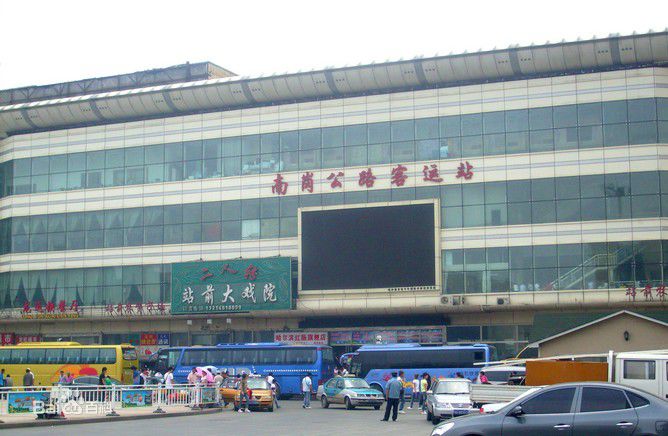
Image via Baidu Baike
Long distance shuttle service between Harbin and other cities is available from a few bus stations. The main one is Nangang Bus Station (南岗客运站).
Located just across the street from the Harbin Railway Station, Nangang Bus Station (otherwise called '长途客运站, or Changtu Keyun Zhan) sells long distance bus tickets for most cities in Heilongjiang, Jilin and Liaoning provinces (Mudanjiang, Qiqihar, Changchun, Dalian, Shenyang, Wudailanchi and Yanji) as well as Beijing.
Here, you can also purchase international bus tickets to Russia. If you'd like to cross the border into Russia, one international coach departs daily at 7am en route to Vladivostok. Head to the Russian travel agency on the second floor to purchase tickets for the 12-hour bus ride, which should cost around RMB500. Bring your passport; other paperwork may also be required.
Local Transportation: Getting Around Harbin
Taxi

Image via Flickr
For the most part, getting around Harbin by taxi is cheap and convenient, however it can be difficult to hail one during the Ice Festival. Cab drivers have also been known to pick up multiple passengers at once during rush hour.
Look out for black cab scams, and when taking short journeys around the city make sure to tell the driver to turn on the meter (请打表, qĭng dă biăo, 'please turn on the meter') instead of negotiating a price so as to avoid being ripped off.
Taxi fares start at RMB8-9 for the first three kilometers, and from there no more than RMB2 will be added for each extra kilometer.
You can also book a cab or private car in Harbin from the DiDi Chuxing app, which now offers service in English.
Public Bus
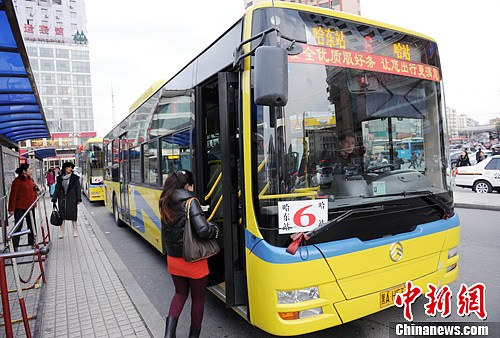
Image via Sohu
Harbin's public bus system is pretty extensive, featuring over 100 routes with stops all around the city. Fares typically cost RMB1-2 per ticket.
Metro

Image via @harbin_daily/Instagram
Opened in 2013, Harbin Metro currently has two lines (Lines 1 and 3) in service spanning 23 kilometers and stopping at 22 stations. Line 1 travels from East Railway Station to South Railway Station, while Line 3 is the city's only loopline, connecting Yidaeryuan and Haxizhan. A third line is currently under construction.
Other Important Harbin Travel Information
Recommended Hospital
The First Hospital of Harbin (哈尔滨医科大学附属第一医院)
Medical University Address: 23 Youzheng Jie, Nangang District 南岗区邮政街23号 (0451-5364 1563)
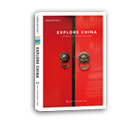 For More China Travel Guides...
For More China Travel Guides...
Already dreaming about your next vacation? Check out our informative online travel guides or purchase our definitive guide to China, the Explore China guide book, on thMart.
This post was last updated on January 11, 2019. Hours and prices for all attractions subject to change. Cover image via Pixabay
Get the weekly newsletter!
Sign up to get the entertainment, lifestyle and event news from Urban Family every week!Classified Posts
News


